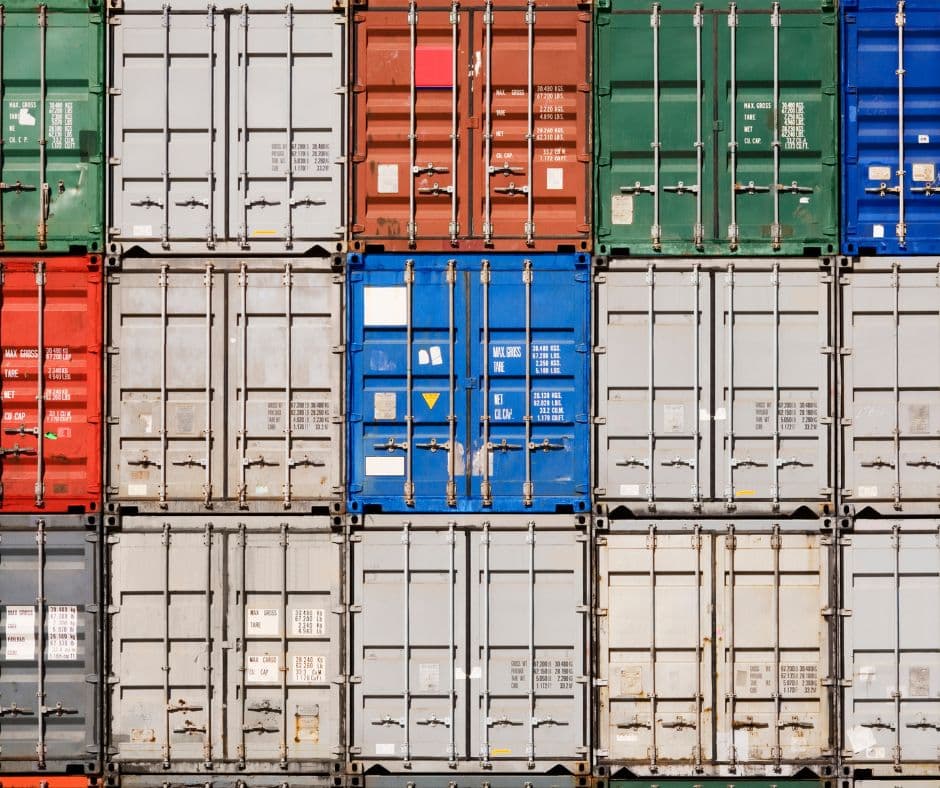The Impact Of Black Friday: Q&A With Dr. Cassia Bomer Galvao
November 27, 2023
Tweet
By Taylor Bounds
With the year's busiest buying season in full swing, bldg. 311 sat down with Dr. Cassia Bomer Galvao, an assistant professor in the Department of Maritime Business Administration, to talk about the impact of Black Friday, Cyber Monday and the winter holiday season on the maritime industry.
When do ports and shipping agents start planning for the holiday rush?
With most retailers still outsourcing their product lines from overseas, the typical arrival time of those goods in the USA is July and August, also known as the "peak season" in the container business. It sounds early, but 3-4 months is the time that it takes for consumer products to be shipped from their origin (mainly China and other Asian countries) to be on the shelves of stores in the continental USA. For ports, terminals and distribution centers, the operational planning is typically done 12 months ahead, with typical updates in 6 months. In practical terms, ports and maritime logistic operational planning really starts in February of each year.
That is early! So when do the goods for the holiday shopping season typically arrive in port?
Some of the holiday supplies are arriving on a regular basis year-round, but the novelty items, such as kids' toys or some special decoration items, are typically shipped in July-August from China and Southeast Asia and have an average of 21-22 days of transit time to U.S. west coast ports.
How has the supply chain adapted to meet the increased demand for goods for Black Friday, Cyber Monday, and the holiday season?
There are definitely some changes that happened in the supply chain of consumer goods as a consequence of the COVID-19 pandemic disruptions that took place in the years 2020 and 2021 and still going on in some places. While some retailers have tried to diversify their suppliers to what is called "near sourcing" to become less dependent on overseas manufacturing in China and Southeast Asia, still about 40% of U.S. imports of containerized manufactured goods come from China. So, for ports and terminals, Asia trades and Asian Carriers are still the main customers when it comes to serving the retailers participating in the big holiday shipping items.
What are the key logistics challenges in ensuring on-time delivery of goods to retailers for Black Friday and to customers for Cyber Monday?
Product availability is the key factor for the success of Black Friday and Cyber Monday campaigns, as the consumer expects immediate access to the products as part of the promotional deal. As a matter of fact, product availability is listed by the consumer as the second most important factor (after price) in their holiday purchase decision. However, there are different logistics considerations for these two dates.
Typically, the retailers launching Black Friday promotions already have the stores stocked up or are trying to get rid of items already in stock, which means these products are ready to be purchased and picked up or delivered to the consumer in specific locations.
In the case of Cyber Mondays, the online shoppers expect fast delivery (same day or next day delivery), and there is flexibility on the retailers' side to ship it from where it is available, employing optimization tools to find the closest and faster route to be used to fulfill orders as per consumer expectations.
Are there specific trade lanes that are more crucial for this time of year?
China is still the main origin of most manufactured goods, so Shanghai to the ports of Los Angeles and Long Beach (LA/LB) or Shenzhen to LA/LB are probably the busiest routes for these products. And, let's not forget that this year, the drought situation in the Panama Canal has made the U.S. West Coast ports even busier, as some shipping lines have ended up redirecting their trade to the West Coast, as they couldn't keep jeopardizing their schedules with the Panama canal closures and delays.
But of course, some retailers have learned a lot from the supply chain disruptions from 2020/2021 and have completely reconfigured their suppliers' options, with near sourcing, meaning buying from suppliers that are closer to the U.S. For example, I would encourage you to check on the tags of clothing items (in particular, cotton items like T-shirts) next time you go to Walmart or Target. You will see a lot of products with "Made in" countries in Central America, India and Pakistan, and less and less China.
What new innovations or technologies have been implemented in recent years to improve supply chain efficiency?
This year's holiday season has started with a significant level of uncertainty, as inflation has taken a toll on consumer spending habits. In that sense, many retailers have worked to boost or improve their artificial intelligence tools and their respective data intelligence services to increase the predictability of consumer purchases, as well as marketing optimization. That is, retailers are using A.I. features to customize their offering products and promotions that best match the consumers' profile. I believe we all have experienced the effects of A.I. in that regard. For example, when you search for one item on a Google search bar and browse about it but still don't buy, the next time you open a social media page or an Amazon page, there will be a list of products "suggested" to you that look similar or are related to the product you searched in the first place.
Whether you do all of your holiday shopping on Black Friday or wait until the very last minute, a vast majority of the gifts exchanged this season will have crossed the ocean via ship. The planning and logistics required to ensure goods arrive on time at every step are crucial to meeting the high-stakes demand of the biggest shopping days of the year.
###
Media contact:bounds@tamu.edu